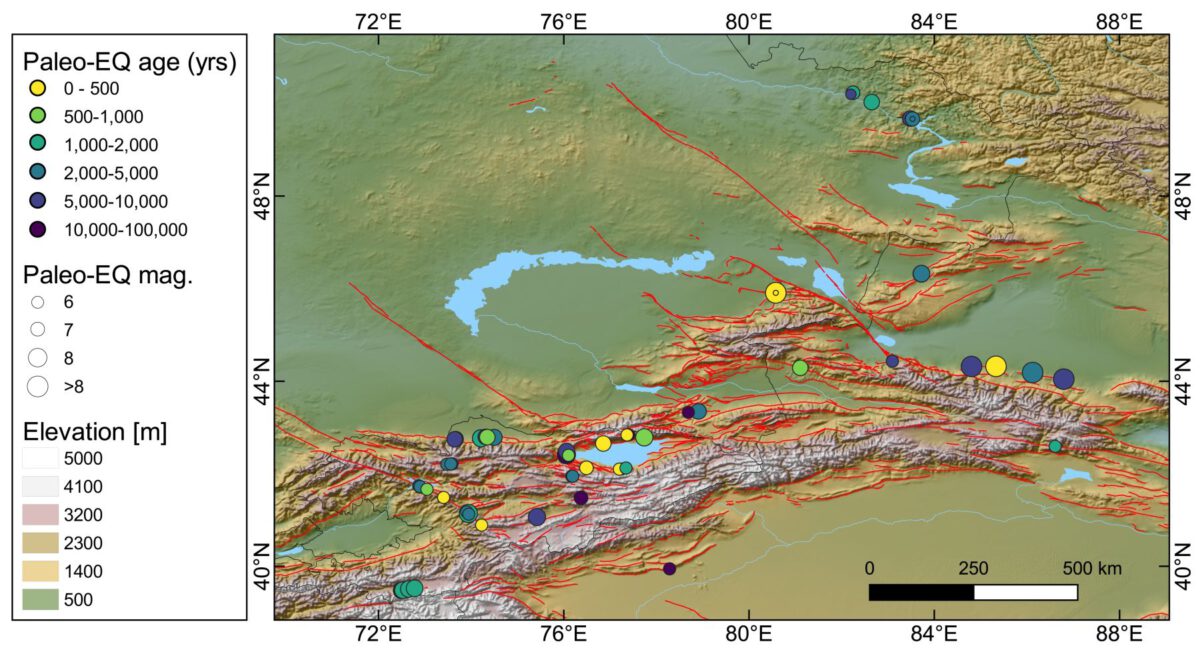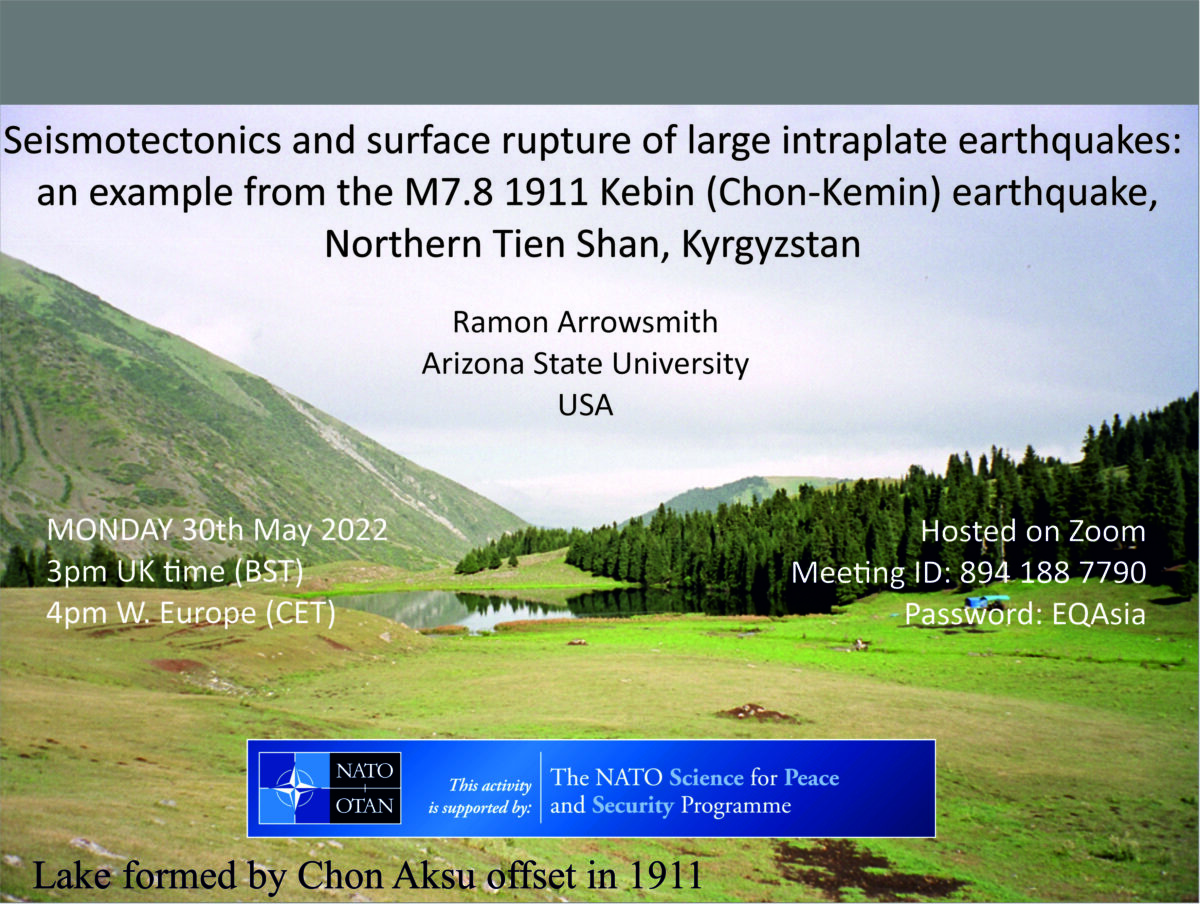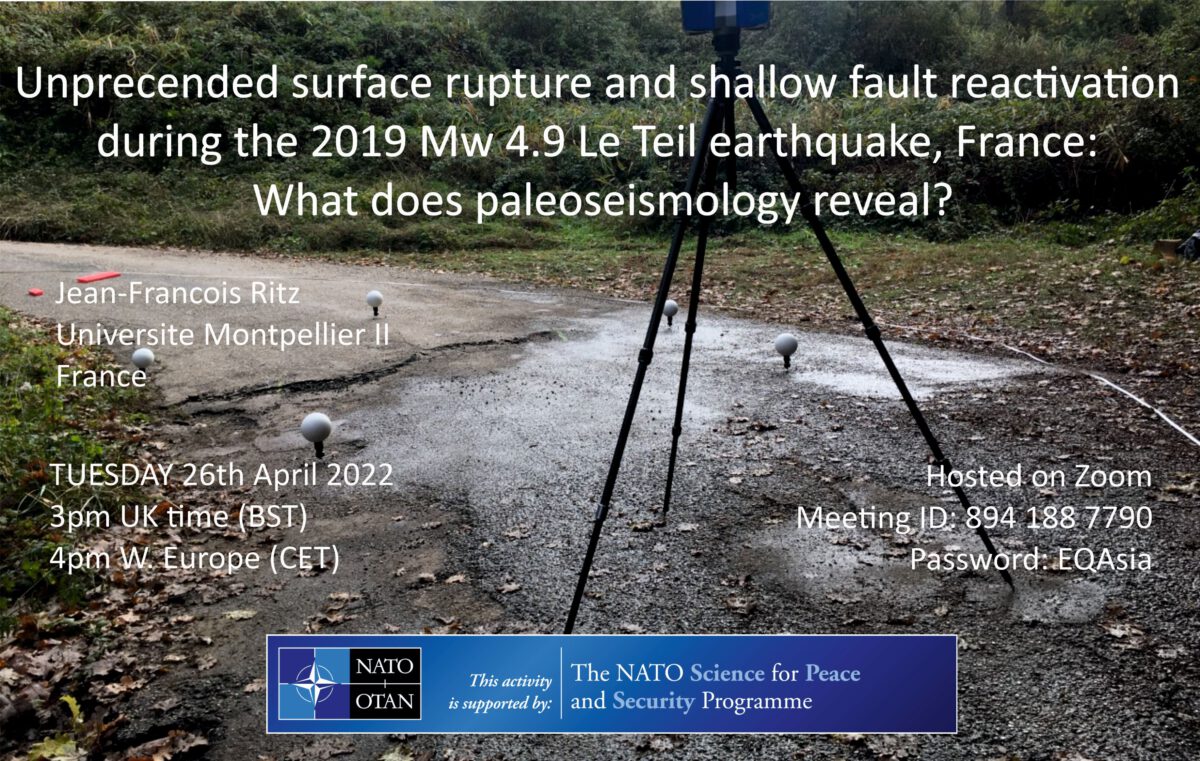In a 20 mins interview with Space Race, Richard Walker talks about our work on large earthquakes and active faults in Central Asia, tectonic geomorphology, our use of satellite data, DEMs, and much more.
Tag: earthquake

Our team has been working in the Tien Shan for many years now and we are very happy to present one of the key outcomes of our several projects. In the new book Earthquakes of Kyrgyzstan we provide an overview over strong earthquakes that occurred in Kyrgyzstan, both instrumental and from paleoseismological studies. The book is open access and can be downloaded here:
On 30 May, Ramon Arrowsmith from Arizona State University talked about Seismotectonics and surface rupture of large intraplate earthquakes: an example from the M7.8 1911 Kebin (Chon Kemin) Earthquake, Northern Tien Shan, Kyrgyzstan in the framework of our NATO-funded project SPS G5690 – “Earthquake Hazard and Environmental Security in Kazakhstan and Kyrgyzstan”. In case you missed Ramon’s presentation, here’s the video.
We’re going to have a summer break and commence our webinar series in autumn. Watch this space for future talks, which take place always on the last Monday of every month, and follow us on Twitter for updates: https://twitter.com/QuakesCentAsia.

In the framework of our NATO-funded project SPS G5690 – “Earthquake Hazard and Environmental Security in Kazakhstan and Kyrgyzstan” we will run an ~1 hr online webinar. Ramon Arrowsmith from Arizona State University will talk about Seismotectonics and surface rupture of large intraplate earthquakes: an example from the M7.8 1911 Kebin (Chon Kemin) Earthquake, Northern Tien Shan, Kyrgyzstan.
The webinar is open for everyone interested and will be held via zoom (https://uni-jena-de.zoom.us/j/8941887790 Meeting-ID: 894 188 7790; Password: EQAsia).
Date: 30 May, 2022
Time: 3 pm UK time (3 pm London; 4 pm Berlin & Paris; 10 pm Beijing; 7 am San Francisco)
On 26 April, 2022, Jean-Francois Ritz from Géosciences Montpellier talked about Unprecedented surface rupture and shallow fault reactivation during the 2019 Mw 4.9 Le Teil earthquake, France: What does paleoseismology reveal? in the framework of our NATO-funded project SPS G5690 – “Earthquake Hazard and Environmental Security in Kazakhstan and Kyrgyzstan”. In case you missed Jeff’s presentation, here’s the video.
Watch this space for future talks, always on the last Monday of every month, and follow us on Twitter for updates: https://twitter.com/QuakesCentAsia

In the framework of our NATO-funded project SPS G5690 – “Earthquake Hazard and Environmental Security in Kazakhstan and Kyrgyzstan” we will run an ~1 hr online webinar. Jean-Francois Ritz from Géosciences Montpellier will talk about Unprecedented surface rupture and shallow fault reactivation during the 2019 Mw 4.9 Le Teil earthquake, France: What does paleoseismology reveal? The webinar is open for everyone interested and will be held via zoom (https://uni-jena-de.zoom.us/j/8941887790 Meeting-ID: 894 188 7790; Password: EQAsia).
Date: 26 April, 2022
Time: 3 pm UK time (3 pm London; 4 pm Berlin & Paris; 10 pm Beijing; 7 am San Francisco)
Ben Johnson, a PhD student from the University of Oxford, describes his experiences from fieldwork over the summer of 2021. Read on to find out more about the Alai valley, glacial histories, and shortening across the northern margin of the Pamir.


The South Caspian Basin (SCB) is an aseismic block that moves independently to its surroundings. Together with the Arabia-Eurasia collision, it controls the active tectonics of Turkmenistan. The directions, rates, and rotation poles of the SCB relative to Iran and Eurasia are not well resolved. In a new paper recently published in TECTONICS, we constrain the motion of the SCB by measuring the slip rate of the Main Kopeh Dagh Fault (MKDF) in Turkmenistan. Here’s what we found:
On 25 October, 2021, Richard Walker from the University of Oxford gave the fourth talk of our lecture series on the tectonics of Central Asia. The topic was “Active Faulting, earthquakes, and geomorphology of the Main Kopeh Dagh Fault, Turkmenistan. The talk was presented on 2021-10-25.” . In case you missed Richard’s presentation, here’s the video.
Watch this space for future talks, always on the last Monday of every second month, and follow us on Twitter for updates: https://twitter.com/QuakesCentAsia

Our team has published a new paper on the seismic hazard in the Almaty region, Kazakhstan. We use high resolution satellite imagery to map faults around Almaty, Kazakhstan, and then use GEM’s OpenQuake to calculate shaking, damage and losses to the city from earthquake scenarios. Here’s what we found.